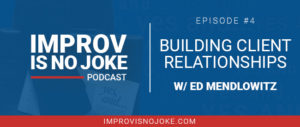
80 million American’s are mortified to speak in public. Peoples’ fear of public speaking beat out fear of drowning, needles, snakes, heights, and even clowns.
Sound like you? If you dread the thought of speaking in front of a group, I can help! You will learn three strategies to help get you past your fear and deliver a more compelling and engaging presentation.
Overcoming your fear of speaking in front of a group is difficult. Your heart is racing, your adrenaline is high, and your inner critic is telling you all the negative things that could happen. All eyes are on you. You actually feel sick from stress and fear. What can you do?
First, you aren’t alone! Even professional speakers like me get a little nervous before a presentation. Working with clients I help everyone understand that overcoming their fear of public speaking is an acquired skill. Here are three tips to help.
Tip #1: Be prepared. Know your subject, understand your audience and be ready. There is a difference between preparation and perfection, no presentation is perfect. Yes, you will make a mistake, maybe more than one. Most of the time, unless it’s a real blooper, the only person who will know about it is you. If you know your material inside and out you can have a conversation with the audience instead of a presentation.
Tip #2: Silence your inner critic. Use the improv technique of Yes And to boost your confidence.
Are you nervous? Yes, and I am also prepared. Are you really prepared? Yes, and I am looking forward to sharing with colleagues. Were you selected to present because you know your stuff? Yes, and this is important to my career.
Tip #3: Practice. Go live in front of friends or family before the big day. Revise as needed, and get comfortable with your material. As you practice, that critical voice that has hounded you for years will fade away.
These three tips are the foundation for compelling and engaging presentation. Hope they help you out. Check my website at www.petermargaritis.com for more details.



